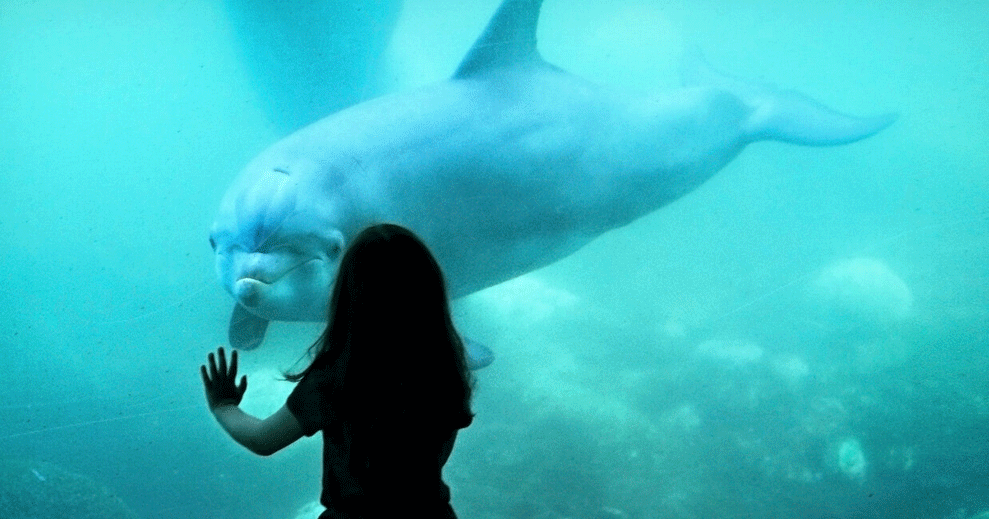
What “Empty the Tanks” and “Anti-Vaxxer” movements have in common and what zoos and aquariums can learn from the latter

Sharon Dewar
Senior Vice President
The past few weeks have seen several tourism companies climb aboard the bandwagon of those opposed to keeping marine mammals in aquariums and zoos. The reason cited is familiar rhetoric frequently espoused by animal rights groups, but lacking in credible evidence to substantiate the claims.
Rhetoric shapes public perception, and perception becomes reality. By continually sowing the seeds of doubt in peoples’ minds, and bolstering those doubts with well-spun, half-truth tales that pull on heartstrings, the public begins to accept opinion as truth and accusation as evidence. The tactics of anti-zoo groups are manipulative and disingenuous to be sure, but as a communications professional, we must acknowledge the shrewdness of their strategy. Their singular focus and multi-pronged approach to achieve the end goal is a frustrating and potentially daunting challenge for zoos and aquariums. But it is not unsurmountable with a strategic communications plan.
The target audience of the Empty the Tanks propaganda campaign is empathetic people who care about animals. This is, of course, the same audience of current or prospective visitors and supporters of aquariums and zoos. This audience is exposed to propaganda from many different directions – not only from animal rights groups (which this audience may or may not find trustworthy or credible), but also from friends and influencers in their social networks, celebrities and companies like Trip Advisor and Airbnb. That pervasive rhetoric makes it difficult to differentiate fact from fiction. The tactic being deployed is a law of propaganda as used by Nazi Joseph Goebbels: “Repeat a lie often enough, and it becomes the truth.”
“Illusion of truth” is what psychologists call this type of propaganda campaign, and it is a strategy that many people and companies buy into. The targeted individuals – who care about wildlife and want to do what is right – begin to feel conflicted and socially pressured. They reach a point of feeling they need to make a choice, and pick a side, and when they do, they likely will err on the side of caution in the animals’ best interest. Of course, the propaganda is strategically executed so caring people will lean toward the animal rights rhetoric as likely the better choice for the animals, despite evidence that would contradict that concern.
When one looks at the persuasion campaign objectively, it is strikingly similar to the anti-vaccine movement that emerged a few years ago and spread like a disease. That too was launched from flimsy – and later roundly debunked – research that played on fears and specifically targeted a susceptible audience – deeply invested mothers, who are often well-educated, live a healthy, organic lifestyle, and want to protect their children from unnatural toxins and environmental harms.
The “Empty the Tanks” and “anti-vaccination” campaigns share common traits:
-
The research that backs their claims is weak or flat-out wrong.
-
They systematically ignore research that refutes their claims.
-
They rely almost entirely on the emotional tales of outliers to drive their movement. For example, rare stories of an adverse reaction to a vaccine, or an uncommon situation where an animal died before the median life expectancy while living in an aquarium.
-
They gain celebrity backers to champion their cause and spin their tale.
-
They target an audience of empathetic individuals who want to protect someone or something they care about.
The last point is the most ironic. It doesn’t make logical sense that a mother who wants to protect her child would risk subjecting it to a life-threatening infectious disease that is completely preventable.
But logic, we learned, doesn’t work. This is one of the key learnings the health community has gleaned from its efforts to combat the anti-vaccination movement. Facts, logic, science, proof – these don’t work. In fact, attempts to educate a vaccine skeptic with evidence and logic often drives them to become more deeply embedded in the anti-vaccine camp.
Movements are driven by emotional storytelling – not science or data. A well-crafted emotional story can lift the soul and inspire, or it can tear at our heart and leave a scar that cripples our brains from rational thought.
Aquariums and zoos can learn a lot from observing the tactics, successes and failures of pro-vaccine communications efforts. The public health community has invested an extraordinary amount of resources into combating the anti-vaxxer movement through communications efforts to build public trust in vaccines. Vaccine skepticism is now considered by the World Health Organization as one of the top ten public health threats of 2019.
Without vaccines, measles is sweeping through communities, children have been hospitalized and people are dying – from completely preventable diseases.
When we look at this through the lens of marine mammals in aquarium and zoo care, most knowledge that supports the welfare and conservation of dolphins and whales in the wild has been gleaned from studies in zoos and aquariums and conducted by, or in collaboration with, marine mammal experts affiliated with these facilities.
One-third of all marine mammals are facing extinction. The oceans are increasingly unhealthy. Dolphins living off the Atlantic coast are less healthy than those living in human care, and are getting even sicker from pollution. Whales off the Pacific coast die from ship strikes and malnutrition, and 83% of endangered North Atlantic right whales are being entangled in fishing gear. Noise pollution in the ocean is endangering marine life, and conservationists rely on the results of hearing studies conducted in aquariums to inform conservation policy.
The future will not be positive if we stop learning from marine mammals in human care, when these learnings are driving conservation solutions to protect them. Just as the future health of children and communities is endangered by the anti-vaccine movement, so too is the future for marine mammals if we empty the tanks.
Aquariums and zoos may benefit from the lessons learned from the pro-vaccine communications efforts, and apply those learnings to their own strategy.
-
Leading communications with logic and science doesn’t work.
-
Attacking the other side doesn’t work.
-
Leading with empathy seems to be making headway. Empathy and fear are key emotions that drive the anti-vaccine propaganda efforts, and are now being harnessed by the pro-vaccine community to persuade skeptics to the other side – and this effort is seeing some success.
If mothers are afraid of subjecting their child to harm, show them what a child wracked with whooping cough sounds like, and what a measles outbreak looks like. Introduce them to people who are physically or mentally debilitated because they were exposed to a preventable disease.
Show, don’t tell. Lead with empathy, not defensiveness or condescension. Understand that the audience wants to do what is right – so do you. You’re on the same team. Help them see that.
By understanding your audience, and the key emotional drivers that influence their behavior, you can build an effective communications strategy that will meet them where their heart is. Showcase in an honest, authentic way how your care and conservation efforts for marine mammals are in the animals’ best interest. Demonstrate how much you care; not just how smart and credible you are.


